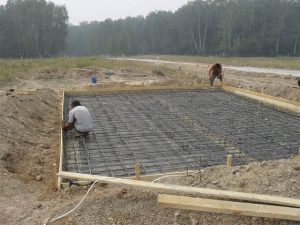
Concrete Foundation casting in a waterlogged area
Concrete Foundation casting in a waterlogged area.
When it comes to swampy or waterlogged areas, a lot of people believe in casting concrete “raw” i.e; without water. They do so because they think that the water in the swamp will suffice in the concrete mixture.
This is a wrong and dangerous practice.
Using a layman’s instance, let’s take milk to be cement. When you put powdered milk into water, it floats. You have to stir thoroughly to dissolve, and even after stirring you will have lumps. But pouring liquid milk in water, it mixes seamlessly.

Another good Nigerian instance is when frying akara. You don’t put powdered/ground beans, pepper, onion salt etc into the oil to mix there. You mix it first before putting into the oil to fry. The same is applicable to concrete casting.
Concrete consists of sand, stone, cement and water in the right proportions.
Building a foundation in a swampy area requires special considerations due to the unstable and waterlogged soil conditions. You have to do the following;
1. Soil investigation: Conduct a thorough soil investigation to determine the soil’s bearing capacity, settlement behavior, and other geotechnical properties.
2. Foundation design: Design a foundation that can resist the soil’s poor bearing capacity and high settlement. Common designs include:
– Piles (driven or drilled) to transfer loads to a stable layer
– Raft foundations to distribute loads over a large area
– Caissons or helical piers for added stability
3. Site preparation: Clear the site, removing any debris and vegetation. Install a drainage system to reduce water levels and improve soil stability.
4. Material selection: Choose materials that can withstand the corrosive and wet conditions, such as:
– Concrete with high durability and resistance to sulfate attack
– Galvanized or epoxy-coated steel reinforcement
– Timber piles treated with preservatives
5. Construction techniques: Implement specialized construction methods, such as:
– Piling rigs with long reaches to access deep stable layers
– Tremie concreting to prevent soil disturbance
– Pre-drilling or pre-augering to reduce soil disturbance
6. Monitoring and maintenance: Regularly monitor the foundation’s performance and soil conditions. Perform maintenance tasks as needed to ensure the foundation’s integrity.
Please consult with a structural firm or geotechnical expert like Blue Iroko Inc. for specific guidance on building a foundation in a swampy area.
